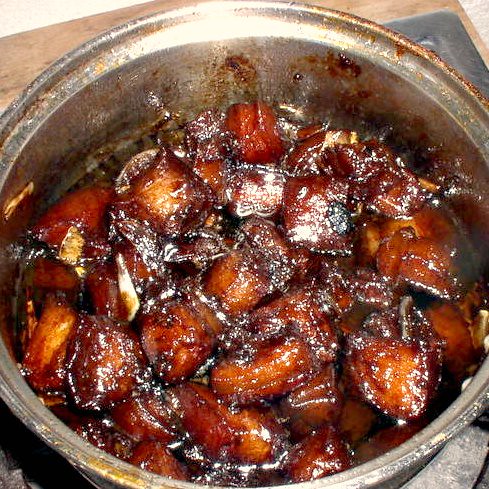
Embutido is a Filipino style of meatloaf. This filipino food dish is one of the favorite filipino dish that my hubby loves to eat. He even consumes the whole wrap of embutido in a single setting. My kids love also the embutido especially with the portion of hard-cooked eggs and sausages.
They said that “embutido” means that it is wrapped with the skin of the pig's intestines. But this embutido is just wrapped with an aluminum foil because my family especially my hubby doesn't like to eat food that contains internal organs of the animals.
Embutido can be served as cold cuts; lightly pan a sliced pieces or fried the whole then sliced. It is also best that you dip a slice of embutido with your favorite food sauce. Enjoy!!!
Ingredients :
- 1 lb. ground pork
- 1/2 cup finely chopped carrots
- 1 cup (6 slices) finely chopped (sweet or cooked) ham
- 3 tbsp. minced green bell pepper
- 3 tbsp. minced red bell pepper
- 1/3 cup sweet pickle relish
- 1/4 cup raisins
- 3 whole eggs
- 1/2 cup grated cheddar cheese
- dash of liquid seasoning
- salt & pepper, to taste
- 1 tbsp. cornstarch
- slices (wedges) of hard-cooked eggs (see recipe)
- slices (wedges) of Vienna sausage
- aluminum foil, 10" x 12" sizes
Cooking Procedures :
- Prepare a steamer and set aside. Alternatively, prepare a baking pan and a wire rack and preheat oven to 350°F.
- In a bowl, combine all the ingredients and mix until well blended.
- Divide the mixture into 2 to 4 portions (depending on how many you want to make).
- Spread and flatten the mixture onto the center of each foil, divide the slices of hard cook eggs and Vienna sausages. Place each slices at the center of each mixture. Hold the foil onto your hand and roll until the ends of the mixture covers the eggs and sausages. Alternatively, by holding each ends of the foil, roll the mixture back and forth until it covers the slices of eggs and sausages in the center.
- Finally, roll the aluminum foil into a tightly packed log about 1" to 2" in diameter, sealing on both ends. Repeat with the remaining pork mixture.
- Place the embutido in a steamer and steam for an hour. Alternatively, if you don't have a steamer: place embutido in a wire rack on a baking pan, half filled with hot water. Cover with aluminum foil (Be sure the steam will not escape). Steam-bake in the center of the oven for an hour.
- Let it cool and slice into rings. Serve with your favorite catsup or sauces.
- Refrigerate unused embutido.
